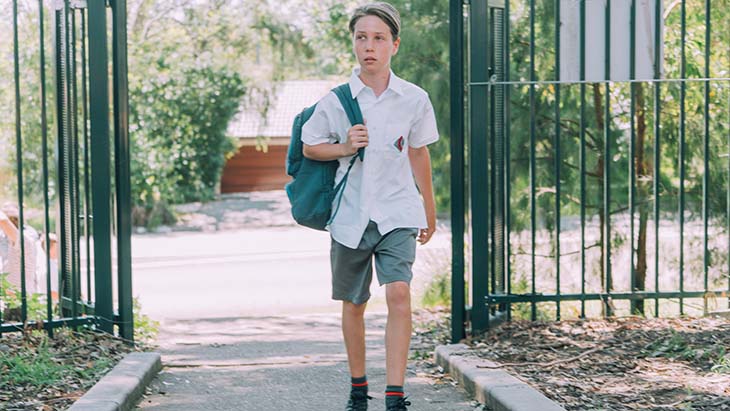Evidence-based strategies for specific learning difficulty
Engage other senses and make learning fun
Use visual supports
Students can be supported to develop competency in numeracy through the use of concrete materials and visual objects in demonstrations. Asking students to create semantic maps or graphic organisers may support students with writing and reading.
Use music, rhythm and touch
Rhythm and music can help emphasise word syllables, rhyming and phonemes to students. Dots on written numbers that a student can touch and count can help a child learn to add and subtract.
Use brain breaks
When possible mix learning with brain breaks to increase student engagement.
Provide students with extra supports and strategies
Teach students to self-monitor
Students can be taught to assess their own work. For example, give students who experience writing difficulties a list of things to include in their work (for example, five adjectives) and ask them to plan how they will do so. They can then assess whether they have successfully included that list of things in their work. Storyboards (drawings of the storyline) may help students plan. Access our self-monitoring form.
Provide opportunities for peer tutoring
Consider approaches for incorporating group work into learning. Students can learn by watching others demonstrate how to do a task, and through peer communication about a task. See our peer inclusion and group work page for important tips about pairing students.
Actively use and teach meta-cognitive strategies
Meta-cognitive strategies help students to understand the way they best learn. Teaching students how to use strategies such as rehearsal (repeating), elaboration (paraphrasing and summarising), reading aloud, using mnemonics, visual supports or organisers (such as concept maps; taking notes), reading comprehension strategies such as self-questioning, and opportunities for learning reflections, can all help students identify strategies to support their learning.
Consider how you give instructions
Provide clear and explicit instructions
Give clear, explicit and specific information to students. Break down target skills (for example, help them identify key parts of an essay question) and identify the components of a problem (for example, break down the steps needed to solve a mathematics problem).
Model tasks and the underlying strategies or thinking
Students may learn more effectively if shown how to do a task. Consider talking out loud to demonstrate the strategies you use to problem solve when working on the task.
Provide concrete examples
Students may learn new information more easily when there are concrete examples and objects. When students can complete concrete problems they can then start working on abstract problems. This is especially important with students from lower primary.
Monitor and check understanding
Check if students have understood what they are learning. Consider checking student understanding and progress regularly.
Provide lots of opportunities to practise
Provide opportunities for students to practise a task lots of times
When programming, plan for repeated opportunities for students to practise and consolidate their learning. Accuracy and fluency can be increased through providing students with repeated opportunities to solve familiar mathematics problems or to read a familiar text. For students who experience difficulties with reading, it is recommended that decodable texts are utilised to reinforce decoding skills.
When a task is new, students will learn best with scaffolded support
When possible, offer them help (such as prompts, demonstrations, encouragement) and gradually reduce this support. Access our graduated guidance resource.
Mix mastered tasks with target tasks
When students are practising, mixing lots of tasks they can already do with a few new tasks can help them feel confident.
Choose computer programs or apps with care
Programs or apps for tablets that target skills such as handwriting, decoding words, spelling, reading rhythm and phonemes may help a student learn these skills.
Programs which ‘do the work’ for the student (for example, programs which read the story to the student) are helpful for activities where the focus is not on their reading (for example, science and technology) but may not be a helpful learning-to-read tool. When a student who experiences reading difficulties is practising reading, they will get better results trying to read words for themselves.
Directly tackle underlying skills
Target phonological awareness and phonics
Consider teaching students phonemes (speech sounds), graphemes (letters that make up a sound such as ‘ph’), morphemes (smallest part of a word that means something, such as ‘cut’ in ‘cutting’), and orthography - especially when students are in lower primary. For example, ask students to rearrange syllables to form a word, or write different word endings.
Resources to support the systematic and explicit instruction of phonological awareness and phonics can be found on the Literacy and Numeracy Digital Resources Hub.
Target comprehension
Building student understanding or comprehension of text can support a student with their reading - especially when students are in upper primary. For example, ask students to guess what might happen half-way through a story, or imagine a scene from the story.
Target working memory
Some students may need extra help to support their working memory (remembering several things at the same time). Consider how to tailor tasks so that there isn’t too much to remember at a time. Extra supports such as mnemonics (memory strategies) or handouts or notes on the board can be helpful.
